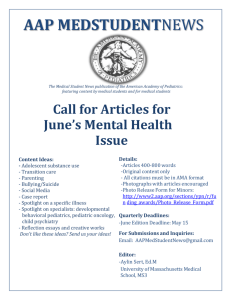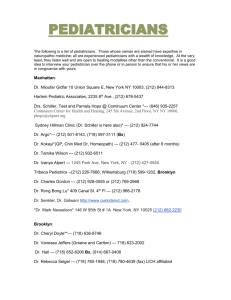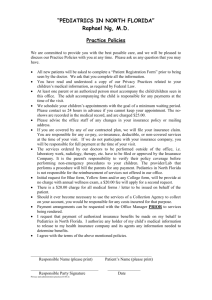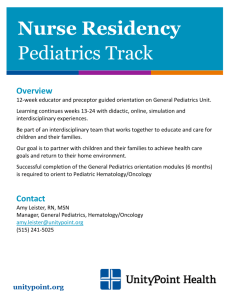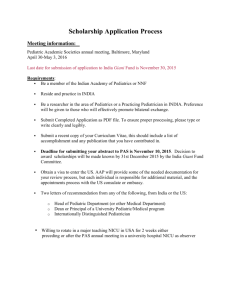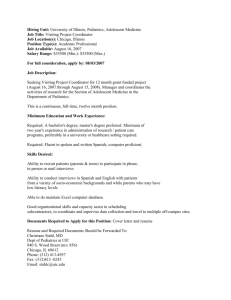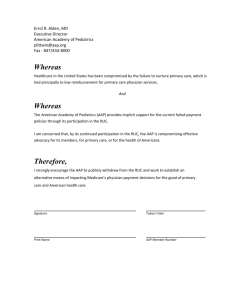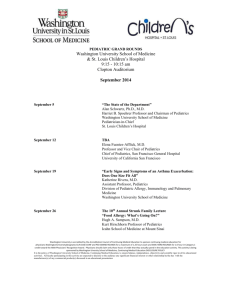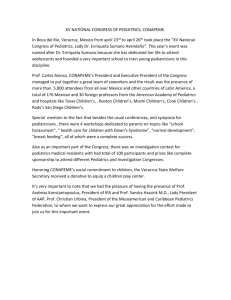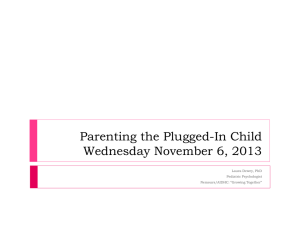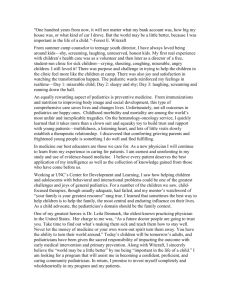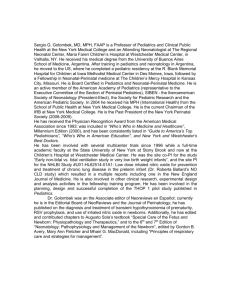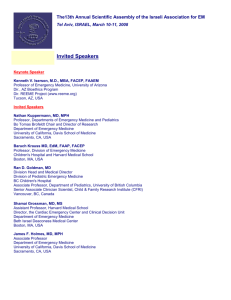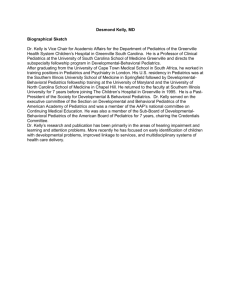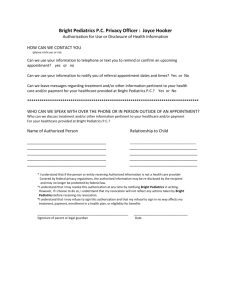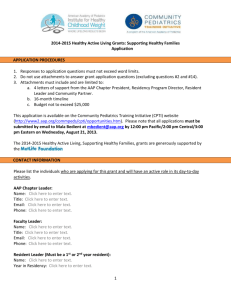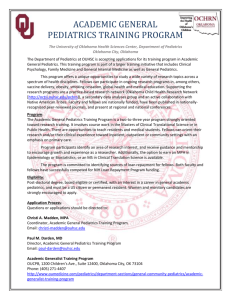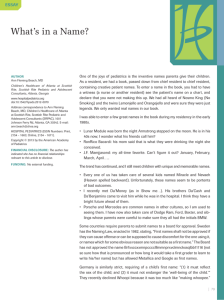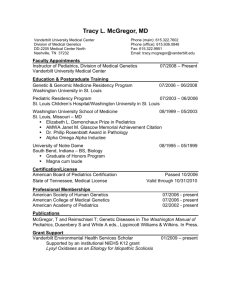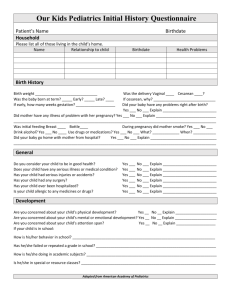Digital Age/Social Media presentation
advertisement
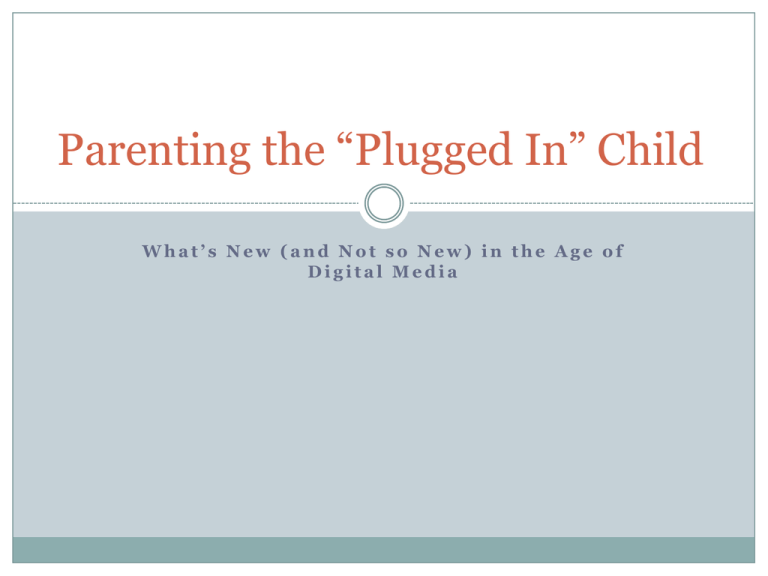
Parenting the “Plugged In” Child What’s New (and Not so New) in the Age of Digital Media Rideout (2010) Is Media Harmful? May be associated with obesity, sleep disturbance (See AAP Council on Communications and Media, 2011 report) May be linked to depression/emotional problems (e.g., Page, Cooper, Griew & Jago, 2010) May interfere with developmentally critical activities May interfere with family life Benefits of Youth Media Use Connect with friends Broaden community Enhance creative thinking Foster sense of identity Supplement learning Increase access to information O’Keefe & Clarke-Pearson (2011) It’s all about BALANCE. Common Challenges Lack of comfort with new media Knowing what limits to set Challenges to setting limits Lack of Comfort with New Media Learn as much as possible “Terms of Use”, “Safety” features www.netlingo.com, www.noslang.com www.netsmartz.org, www.parentfurther.com Ask your child to teach you! Setting Limits Promote Health Positive behavior Emotional wellbeing Protect against: Cyber-bullying Access to inappropriate content Recommendations from the AAP Infants < 2 years: 0 hours of screen time/day Children > 2 years: <2 hours of screen time/day Avoid TV sets and internet connections in bedrooms Co-view with children Limit nighttime screen media use AAP Council on Communications and Media (2011) Setting Limits Modeling Healthy media use (and balance) Good citizenship (e.g., abiding by the rules) Direct Conversation Provide Alternatives Including activities for the whole family to enjoy Monitoring Challenges to Setting Limits Dealing with protest Helping children find value in other activities When to Seek Outside Help Concerns for cyber-bullying Change in your child’s: Mood Enjoyment of non-media activities Sleep Grades/school performance Behavior Ability to participate in family life References American Academy of Pediatrics Council on Communications and Media (2011). Policy statement: children, adolescents, obesity and the media. Pediatrics, 128(1), 201-208. www.pediatrics.org/cgi/doi/10.1542/peds.2011-10660 O’Keefe, G.W. & Clarke-Pearson, K. (2011). Clinical Report: The impact of social media on children, adolescents and families. Pediatrics, 127 (4), 800-804. http://pediatrics.aappublications.org/content/early/2011/03/28/peds.2011-0054 Page, A.S., Cooper, A.R., Griew, P. & Jago, R. (2010). Children’s screen viewing is related to psychological difficulties irrespective of physical activity. Pediatrics, 126(5), 1011 -1017). Rideout V. (2010). Generation M2: Media in theLives of 8- to 18-Year-Olds. Kaiser Family Foundation: Menlo Park, CA.
